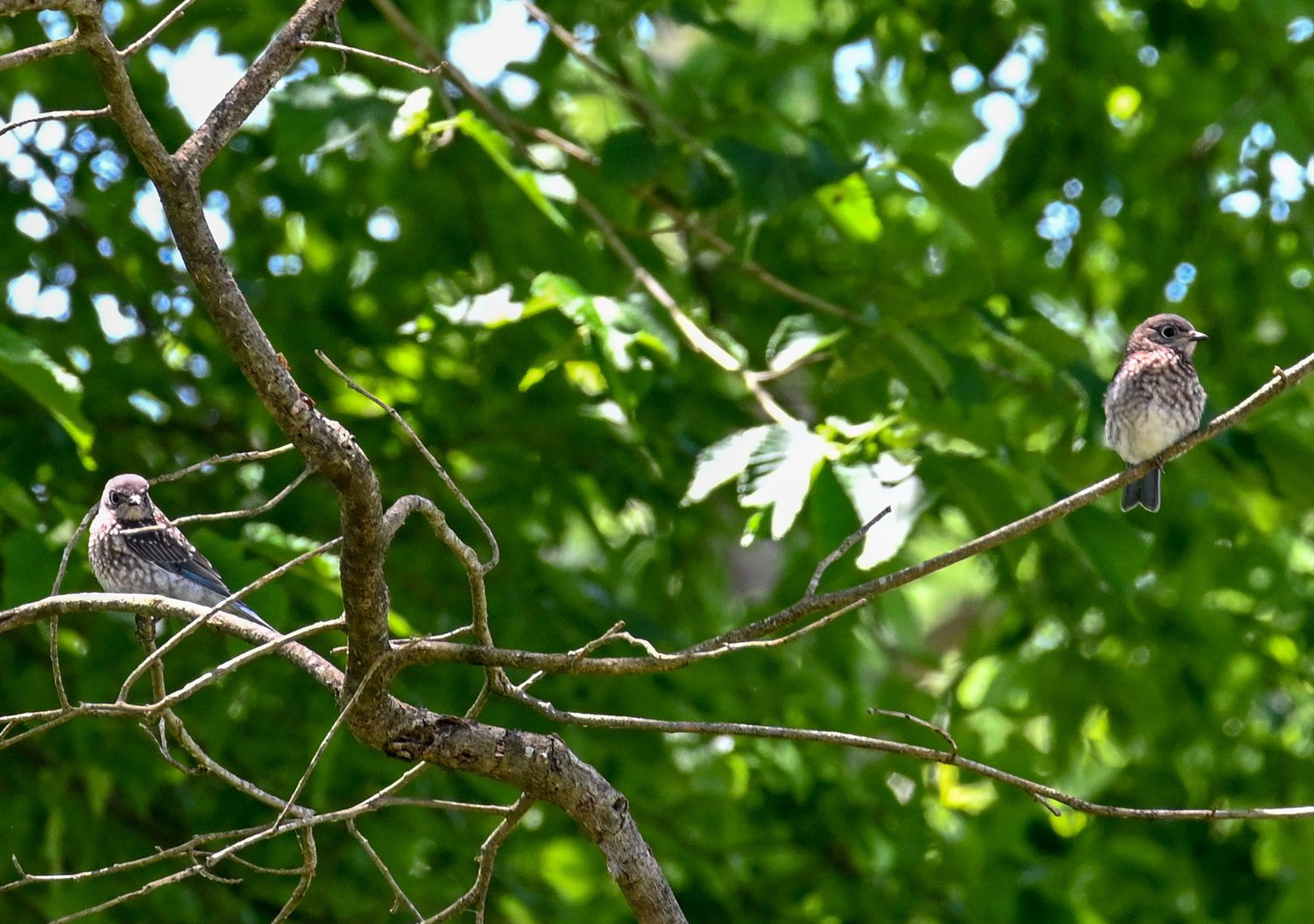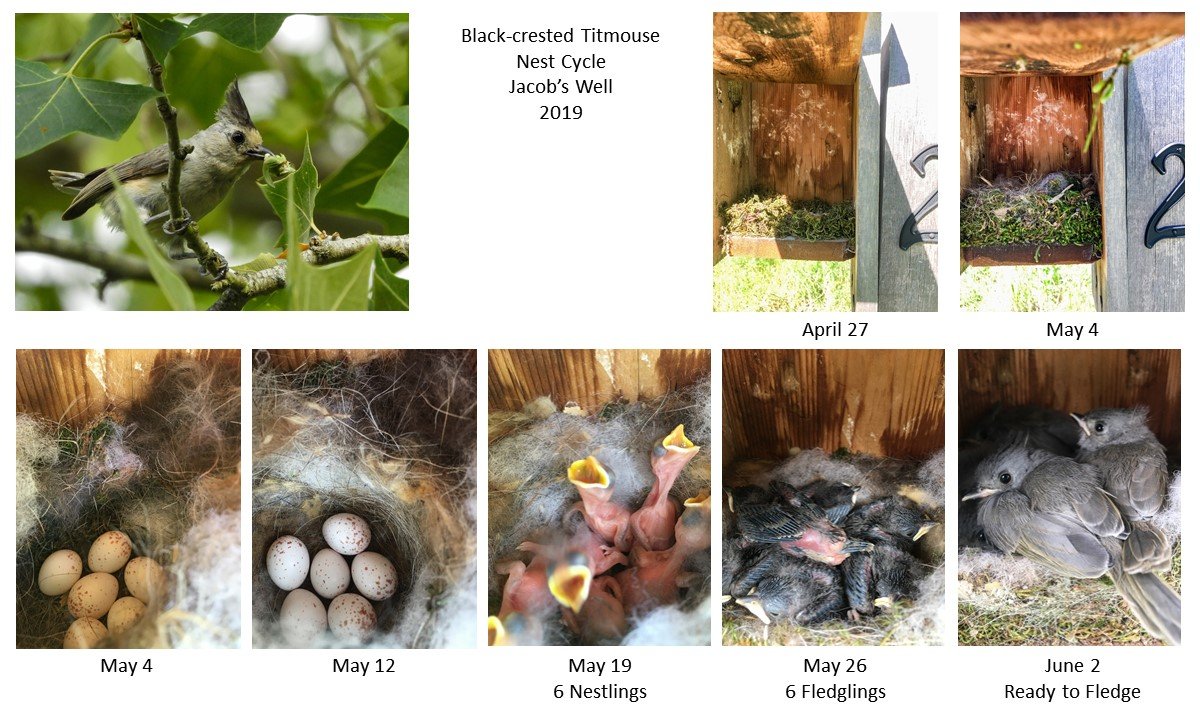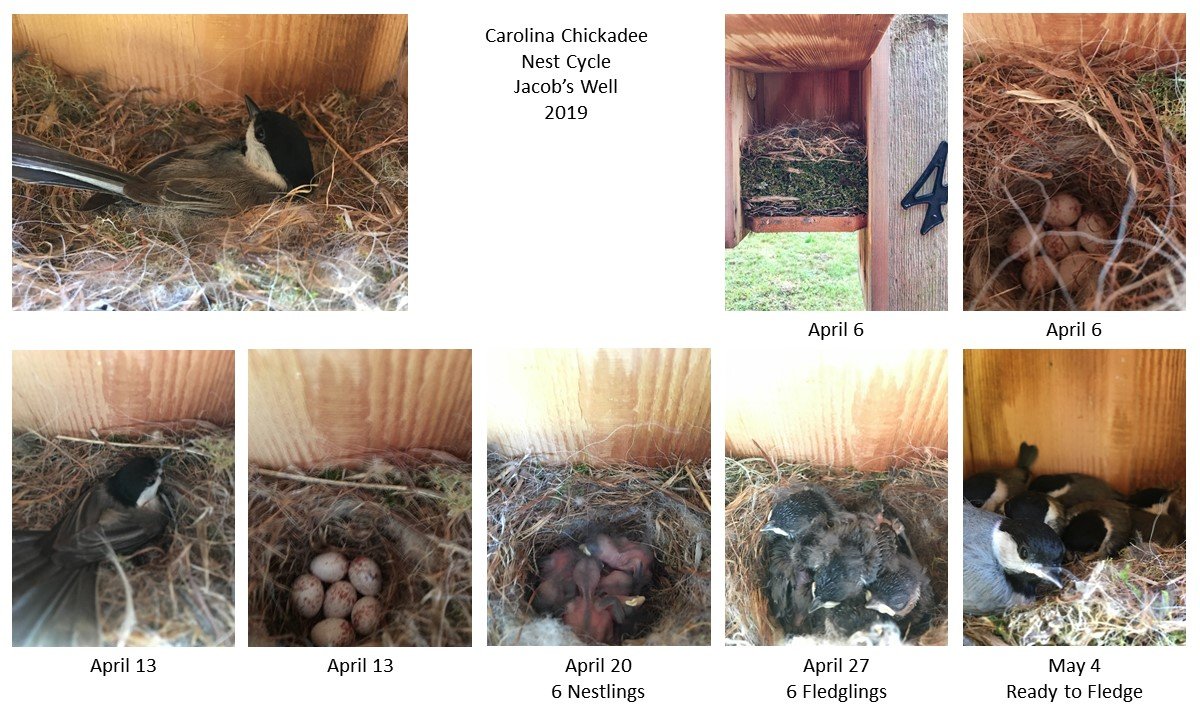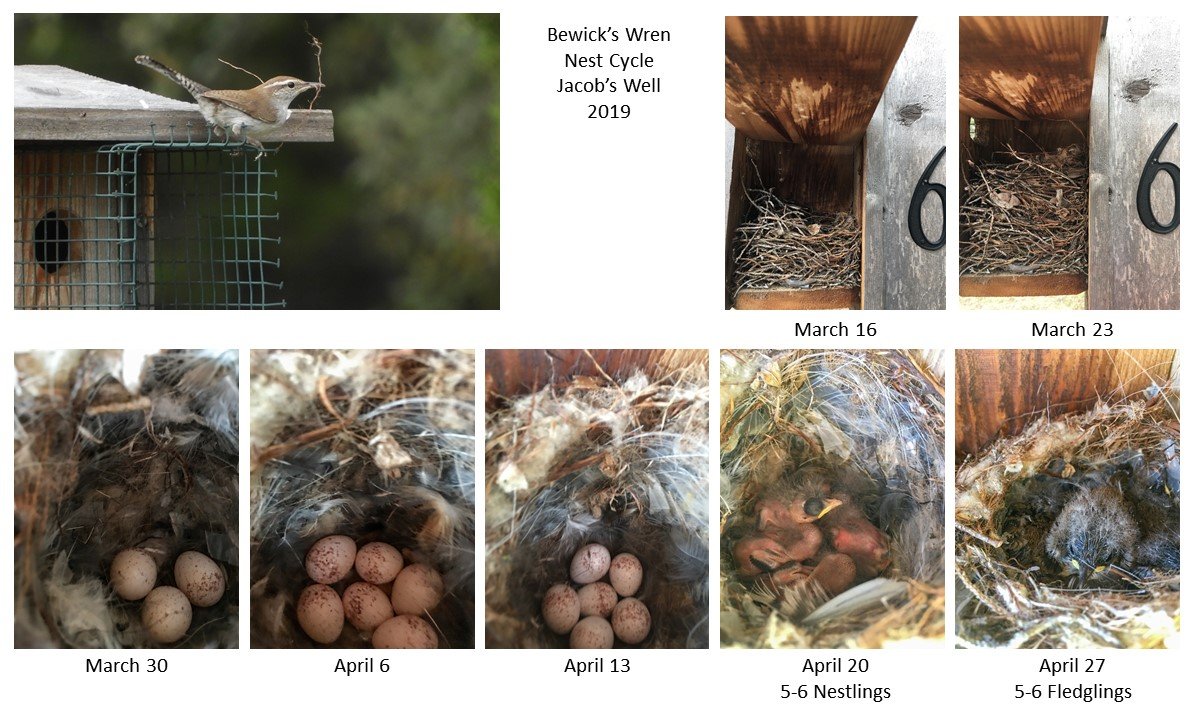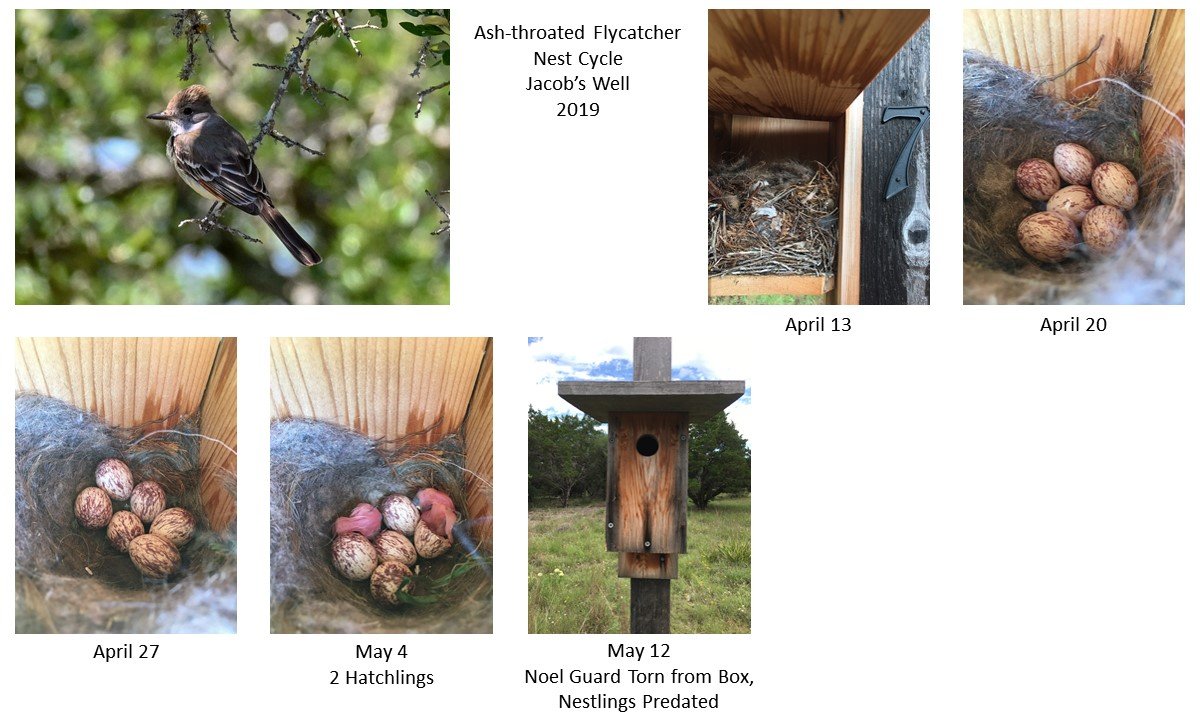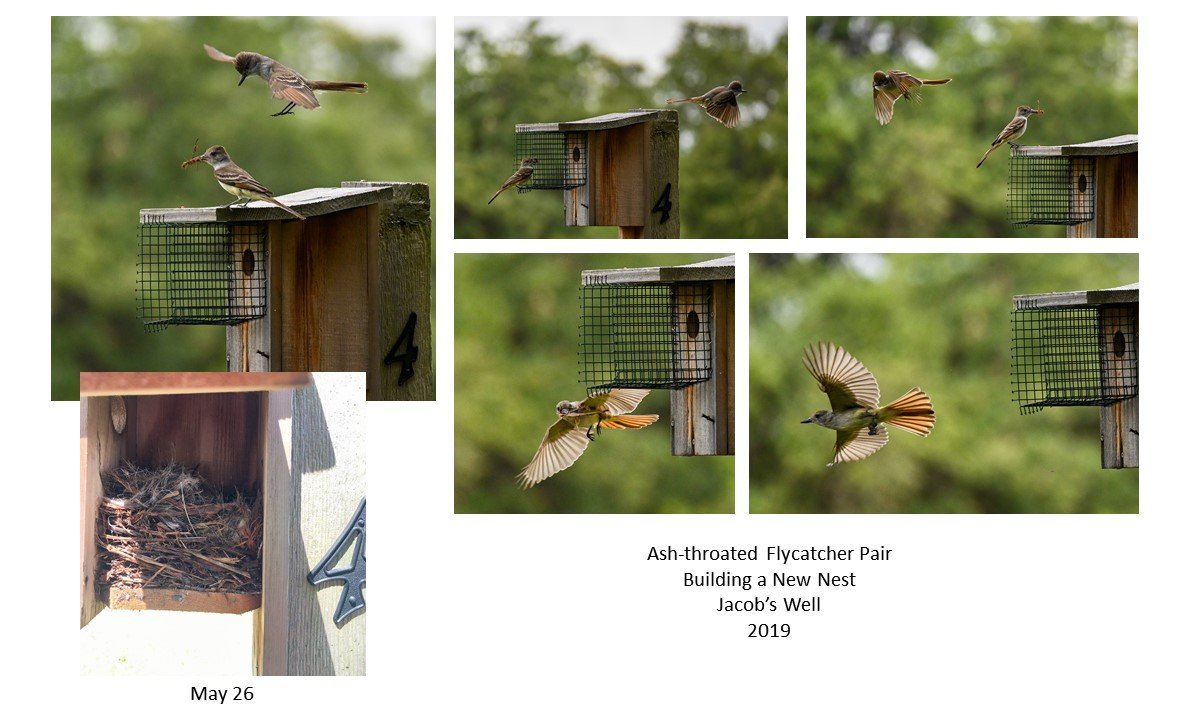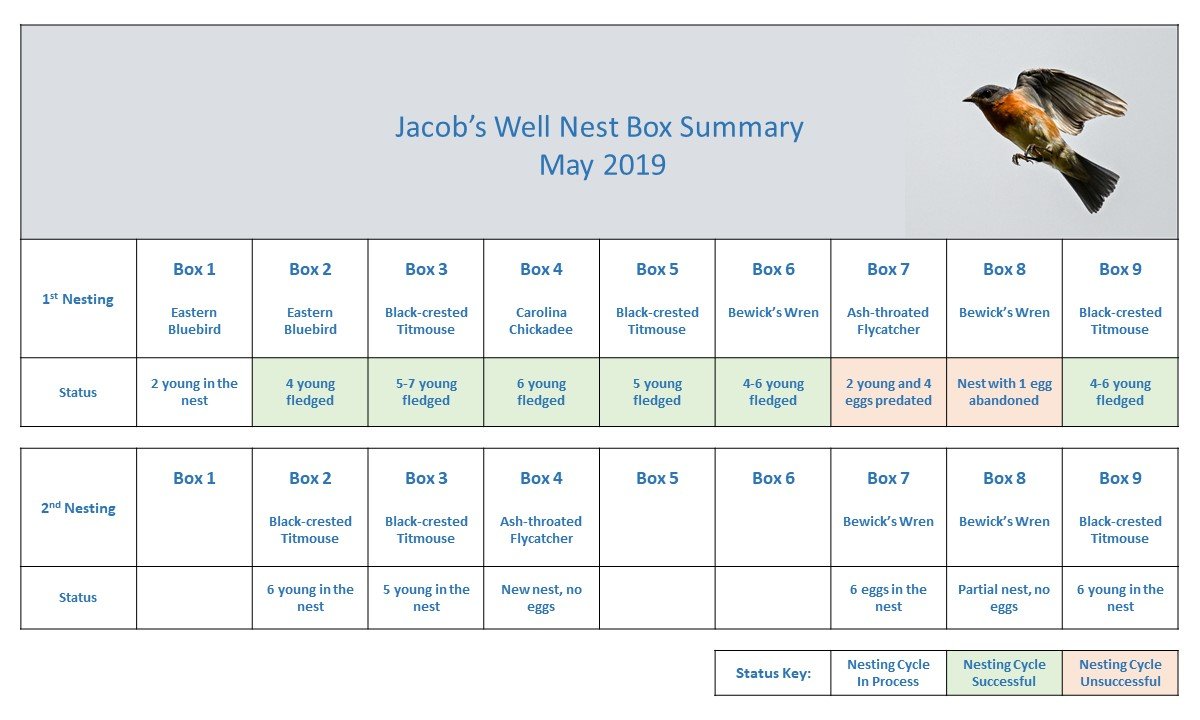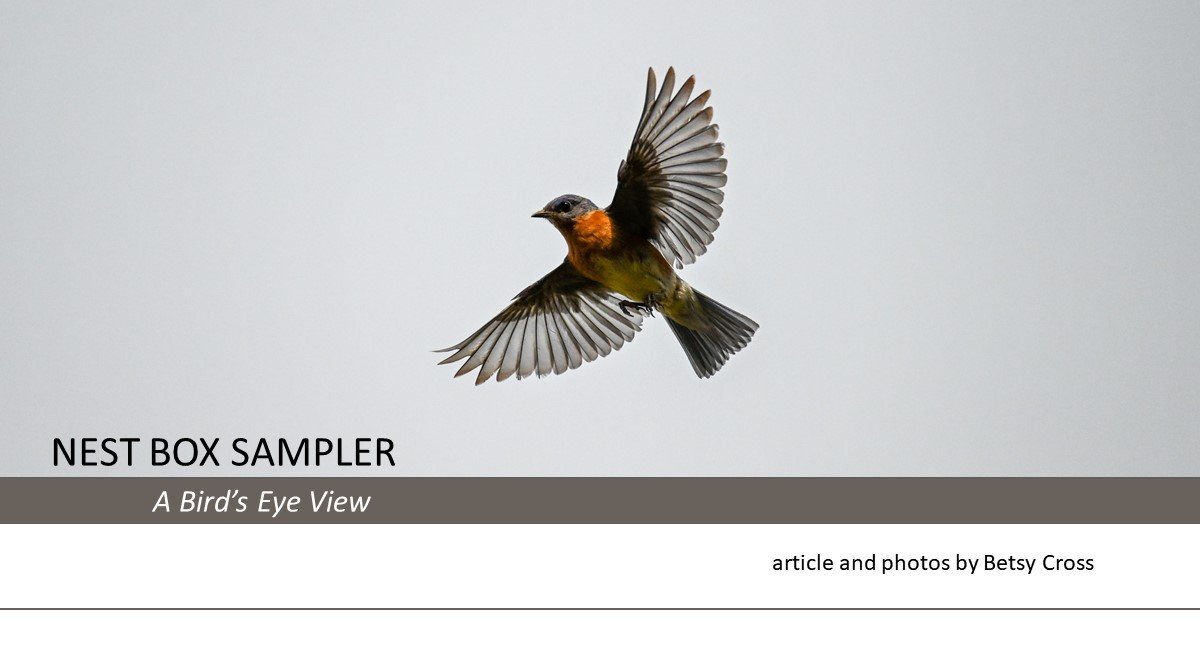The Hays Humm - June 2019
TOM JONES & BETSY CROSS
“One has only to sit down in the woods or fields, or by the shore of the river or lake, and nearly everything of interest will come round to him – the birds, the animals, the insects; and presently, after his eye has got accustomed to the place and to the light and shade, he will probably see some plant or flower that he had sought in vain for, and that is a pleasant surprise to him.”
Bonnie and Terry Tull
Bonnie Tull
About Me: Grew up wandering the hills of Westlake, when it was wild, when the tallest buildings in Austin were the UT Tower and the Capitol, and you couldn’t walk the streets without seeing someone you knew. Met Terry at age 12, never dreaming he’d become the love of my life to whom I’ve been happily hitched for almost 50 years. Love history and knowing that my roots were in North America before the Pilgrims and in Texas before it was a Republic. Never made a career of my BA in Spanish, but pursued multiple occupations ending up primarily a nurturer of wildlife.
You May Not Know: Learned first hand, as a Navy wife, what was meant by the quote: “If the Navy had wanted you to have a wife, they’d have issued you one”. In other words, something akin to prisoner 24601 in Les Mis - wouldn’t have traded it for anything. Made the most of our 30 years round the world, relishing life on both coasts of the United States, the Philippines, England twice, Panama, and Oslo, along with cherishing many “Forrest Gump “moments. Best achievement: two children who are truly citizens of the world.
Favorite MN Activity: I’m known as the “Bluebird lady”, so I guess it’s not surprising that the Bluebird Project, which I started, is my favorite activity, but I’ve also enjoyed years of being a hike guide for Austin Wildlands and working with Terry and the AWQPL to help restore those wildlands.
Bird I Most Identify With: Again, I’d have to say a Bluebird just because I’ve spent so many years studying them, and I’d love to be as charming as they are.
Terry Tull
About Me: I grew up in the Hill Country west of Austin, then spent 30 years in the Navy, constructing and managing shore facilities. When Bonnie and I returned to our home town, we wanted to live again in the hills where we grew up. After we found our little slice of heaven, we discovered that we needed to know more about living with nature, and that brought us to the MN program. I have been so glad we became MNs, and plugged into its rich network of resources that helps us better understand and steward the beautiful land that has been entrusted to us for our short time on earth.
What You May Not Know: My mother was an Australian war bride who married my dad, a Navy man, during WWII. Mom was only 5'-2" tall, but she loomed large in my life and was accomplished at many things. She was also a terrific gardener who could grow anything. Sadly, I didn't inherit her green thumb, but I thank her for my love of nature and the confidence to do anything I set my mind to (well, ....most anything!).
Favorite MN Activity: I love to work on the Austin Water Quality Protection Lands. We get to work shoulder to shoulder with some of the best restoration biologists you can find, and the opportunity to be outdoors and to experience these beautiful and natural places is a huge bonus!
Jim Miller
About Me: I was adopted from a German orphanage and my family and I lived in several states before settling in San Antonio. I served a tour in the Navy and received a B.A.A.S from SWTSU. While attending college, I discovered Wimberley and liked it so much I never left. Married a local girl and raised our family here. I retired from welding in 2015 and began working with several volunteer organizations in the community.
What You May Not Know: I served as an EMT for 6 years back when Wimberley EMS was staffed completely by volunteers. With a background in underwater welding, I logged many diving hours in Jacob’s Well and have some scary stories to tell!
Favorite MN Activity: Most of my volunteer hours are spent at Blue Hole and Jacob’s Well. Cutting cedar on a crisp winter morning is enjoyable.
Favorite Bird: Definitely the Mockingbird. He sings you the bird hit list and throws in a dance. What a deal!
So this year is the 20-year anniversary of our chapter. That got me thinking about the passing of time in my own life (I am now 65). In other words, how had I changed over the years and how did I wind up here in Hays County?
I grew up in Chicago through 8th grade. I remember looking up at the night sky and seeing the Milky Way. I bet it’s been a long, long time since any kid growing up in the city (or even the Chicago suburbs) has seen the Milky Way. I don’t really remember seeing much in the way of grass or wildflowers or anything like that, just the Milky Way. I loved going to the museums on field trips, not only to get away from school, but because I really liked to see and learn the various things I found in the great Field Museum, a museum filled with Natural History exhibits. Matter of fact, when I was in high school and started ditching school, I frequently went to a museum instead. (What a nerd!)
Emily Oaks Nature Center-Skokie Illinois
Image from Emily Oaks NC Facebook Page 8-13-18
Then we moved to the suburbs. A semi-wild park, Emily Oaks, was just down the block. It was just a neighborhood park. But it had trees, trees, glorious trees. And a pond! I saw ducks, turtles, fish, snails, skinks, algae, dragonflies, hoverflies, water-spiders, foxes, hawks, and flowers. I found Trilliums, Jack in the Pulpits, Snowberries, May Pops, Pussy Toes, Lilies of the Valley, and Lady Slippers under all those trees. I collected those flowers and pressed them into a book, labeling them with their funny hard to pronounce Latin names. Was this the start of a Master Naturalist? I don’t have those flowers anymore, but I still remember them; their colors, their smells, and most importantly, the joy of their discovery.
But it was the trees that I loved. Looking at the park today, the trees are still there, 40 years older and bigger than ever. I spent as much time as I could in this little park, as it was a perfect source of refuge during my angst-filled teenaged years.
Alas, the Dutch Elms of my youth did not get bigger. They died out in my teens, of Dutch Elm disease. Whole neighborhoods, even towns (Evanston) changed overnight. This was my first, but not my last, experience of tree death. The carefree first 20 years of my life were over.
Iowa Maple Tree - Iowa Department of Natural Resources
I followed a friend to Iowa and went to work at Sugar Bottom Stables; named for the Sugar Maples someone planted in a failed attempt to start a maple syrup farm. Even then I understood that while Iowa was full of hardwoods, they were not naturally of the sugar maple variety. But enough survived that they lit up the landscape in the autumn.
I learned about soil there. The dark clay soils of the Midwest. In the spring and summer, the local news stations would list the soil temperature and subsoil moisture amounts. Who knew that soil could hold moisture up to 6” below the surface? After sinking the tractor in the mud up to the seat one day, I learned to listen and absorb the knowledge given. Was this more evidence of a Master Naturalist popping out?
Coralville Reservoir - Friends of Coralville Lake Facebook Page
Coralville reservoir was across the road. Golden eagles nested there. I remember the first time I saw one, flying overhead. I stared at it, tilting my head back so far to see it, I fell over backwards. But I didn’t care, it was a magnificent bird and I would have happily stared at it all day. I saw a small flood event create a real oxbow in the creek on the farm, just like the one in the book I read during that year, The Ox-bow Incident.
I started moving to where it was warmer, first stopping in Evergreen, Colorado. Here I learned about humidity, or the lack thereof, and its effects: how the weather feels. Clothes that were correct for zero degrees in Iowa were overkill at 7,200’. I learned that once it got cold enough, there was a spot on the way up the mountain where it would rain on one side of the tree, and snow on the other. I figured while it would be too cold for me even to contemplate going above the tree line anywhere, at least I could say I was above the snow line. I experienced my 2nd tree loss here. Pine beetles.
Always wanting it to be warmer, I showed up in Texas - oh so warm, not so sunny - Texas. Oh well, you can’t have everything.
I did lots of trail riding here. I rode on the beach at Matagorda Island in January, learning once again how humidity affects your comfort level; I never repeated that foolishness. Another time I rode on the beach two weeks after a hurricane. I don’t recommend doing that either. By then, the mosquitoes were huge. Not because of the storm itself, but because the particular species (Psorophora ciliate) that hatches out after big flood events like a hurricane. They aren’t called American GIANT Mosquitoes for nothing. I learned that many things (flora and fauna) in Texas scratch, stink, or sting.
Blanco River - May 2019 - Photo by Tom Jones
I turned 40 during this time and packed away a lot of adventures and memories before I stopped riding. Now it was time to live by a river, the Blanco River. Riparian adventures awaited me. I saw water rises of 15 feet in less than 15 minutes. There were water moccasins and cottonmouths, mole-hunting herons, and pecan tree bagworms. I talked the neighbors on either side of me to join in and buy parasitic Trichogramma wasps for release. I was getting closer to being a Master Naturalist.
I saw my neighbor pump water out of the river all summer long to irrigate his 2 acre Zoysia grass lawn. I didn’t have to be a Master Naturalist to know how wrong this was, but I didn’t yet have the language to communicate effectively with him. I also began to see my 3rd tree death event, Oak Wilt, which isn’t limited to Texas.
I stopped training horses and got a real job. I bought a house and started planting, planting, and planting some more. I discovered there were deer, and deer, and more deer, oh my! I thought back to Emily Oaks Park and all the native flowers there. Could that be the key? Yes!!!!! And so my 40’s rolled into my 60’s with me learning about native plants, and how I could use a non-mowing strategy to recolonize my meadow and woods with native grasses and plants.
Then I finally take the plunge. I become a real live Master Naturalist. How fitting that my class was the Nighthawks, a common bird I saw (and heard), backlit against the Milky Way sky of my youth.
Now, as I watch my neighbors mow their front yards, I can write a blurb for Nextdoor Saddleridge and point out how by mowing the annual Coreopsis they all “oohed and aahed” over this year, before it set seed, they pretty much guaranteed it will be a long time before we ever have that large a bloom in the neighborhood again. I can tell them about the monarch’s life cycle and how their mowing of Asclepias asperula (Antelope horn milkweed) before all the 1st generation of monarch chrysalises had hatched hastened the decline of the species, instead of its growth. I could tell them… Maybe I won’t tell them all of it at once. I’ll let them start their own 20-year journey into the wonders of being a Master Naturalist.
And now a fourth tree death event looms on the horizon, Emerald Ash Borers.
As I contemplate the next 20 years of my life, I suspect thoughts of my own mortality will show up on some of those quiet mornings when I am feeding the koi in the pond and watching the hummingbirds fly to their feeders. So I have planted American and Cedar Elms, Big Tooth and Southern Sugar Maples, and Texas Ash trees in my woods. I hope they will be survivors waiting for me when I enter my 80’s.
As a Master Naturalist, I know there is always hope.
“I am a member of a fragile species, still new to the earth, the youngest creatures of any scale, here only a few moments as evolutionary time is measured, a juvenile species, a child of a species. We are only tentatively set in place, error prone, at risk of fumbling, in real danger at the moment of leaving behind only a thin layer of our fossils, radioactive at that.”
Ladder-backed Woodpecker Delivering Food
Gulf Fritillary
Summer Tanager
Painted Lady
American Lady
Purple Horsemint, Lemon Beebalm
Volunteer Photo Gallery
Each week from February to August, I make the trip to Jacob’s Well to monitor and document the nine bird boxes across the property. The boxes are designed specifically for our Eastern Bluebirds, but they are also used by a variety of cavity-nesting birds. So far this year we have hosted two nest boxes of Eastern Bluebirds (both on the south side of the dry creek bed) and six boxes of Black-crested Titmice. The Ash-throated Flycatchers are rebuilding after their first nest was predated. New this year, we’ve had a nest box of Carolina Chickadees and two active boxes of Bewick’s Wrens.
All photos inside the nest boxes were taken with an iPhone. All other photos were taken with the Nikon B700 or Nikon Z7.

